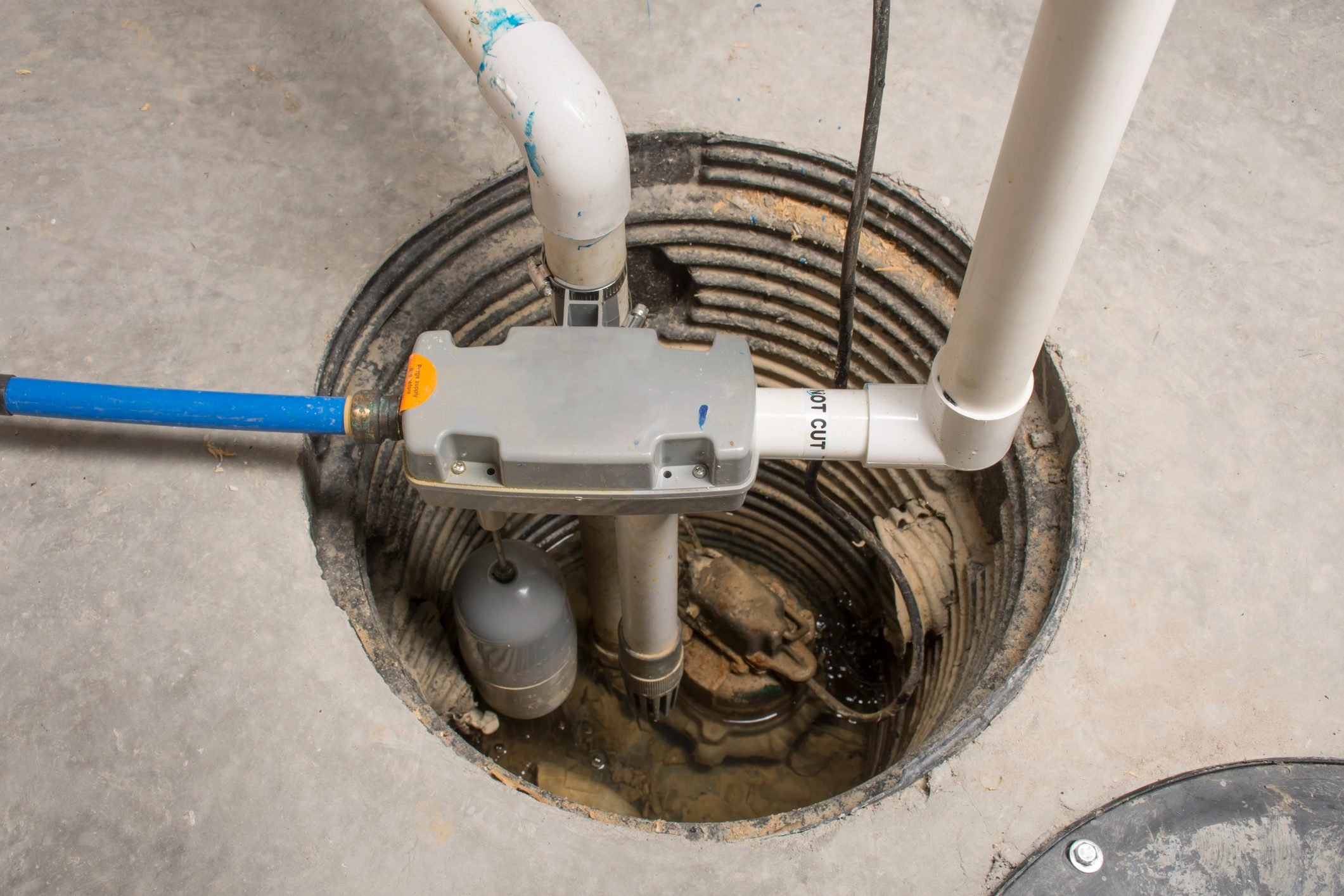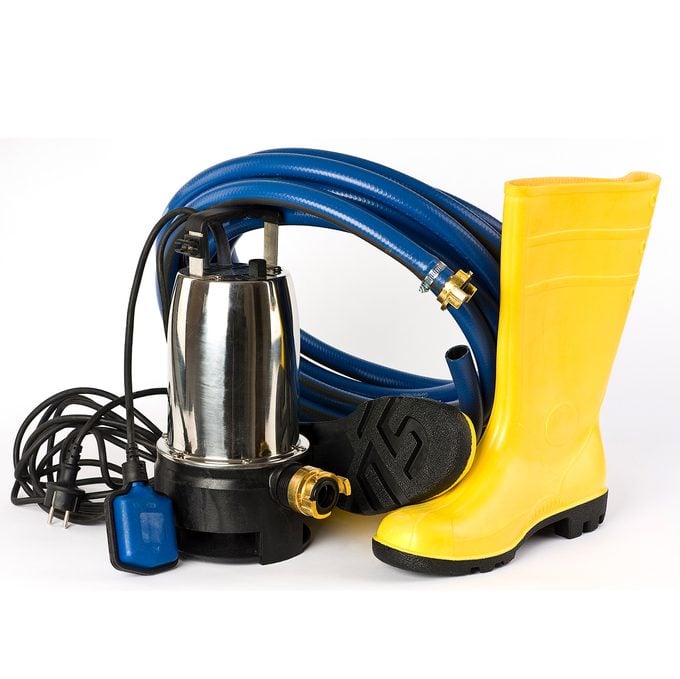Standing water in your home can lead to structural problems and health hazards. One solution is a sump pump.

What Is a Sump Pump?

The problem of how to move standing water from one place to another preoccupied scientists for thousands of years. Historians report that even the great Greek mathematician and inventor Archimedes worked on the problem. Fortunately for modern homeowners, the problem was solved in the late 1940s with the introduction of the sump pump.
Standing water is a headache for homeowners with basements built into ground with a high water table or poor drainage. A flooded basement can cause expensive water damage and even be a health hazard. Out in the yard, standing water in low-lying areas with poor drainage can render that part unusable and a create breeding ground for mosquitoes. A sump pump remedies both situations.
On This Page
What Is a Sump Pump?
A sump pump transfers water from a low-lying area to a place it can drain safely away. The word “sump” means pit. You’ll usually find them in a basement or crawl space of a home. In the yard, a pump that clears standing water from the might be called a transfer pump, but it’s basically a sump pump.
There are two kinds of sump pumps. A submersible pump spends its life under water, while a pedestal pump stays above ground with only the water inlet filter submerged.
Submersible pumps are quieter than pedestal models, but because they’re underwater they don’t last as long. Ultimately, the choice depends largely on the water problem.
Why You Might Need a Sump Pump
The main reason for installing a sump pump is to keep the basement or crawl space dry. That offers related benefits, including:
- Preventing damage to the building structure;
- Controlling mold and mildew growth;
- Preventing electrical hazards caused by standing water.
By keeping the basement dry, a sump pump can actually increase a home’s value. Running across one in the basement during a home inspection should actually be reassuring rather than a cause for concern. Sure, it indicates a water problem. But it also indicates the previous owners did something about it.
A red flag would be a basement that floods without a pump to control the water. Sixty percent of homes in America have wet basements, according to Home & Farm Insurance, and a good many have active water problems.
Even if the basement isn’t actively flooding, a high water table is a good enough reason to install a sump pump. Excessive groundwater puts hydrostatic pressure on the basement walls and floor and can cause structural damage. If you’re planning to install one in your basement, this is the cost to install a sump pump.
How Does a Sump Pump Work?
Most sump pumps are centrifugal, meaning they have spinning impellers. If the pump is submerged in the pit, the impeller pushes water directly into the drainage plumbing. If it’s a pedestal pump, the impeller creates suction that pulls water out of the pit and into the plumbing.
It’s easier to push water than pull it, so submersible pumps are generally more powerful.
The pump needs a float switch to tell it when to turn on and off. There are three main type of float switches:
- A tethered float switch is a floating ball attached to the pump by a cord. It pivots as the water level rises, allowing a steel ball inside it to trip the switch.
- A vertical float switch rises with the water level. When it reaches a predetermined level, it turns on the pump. When the water level falls, it turns the pump off again.
- A pressure switch, the best one for a small pit, monitors water pressure, which rises with the water level. It turns the pump on and off at preset values.
A plumbing pipe attached to the pump’s outlet directs water outside to a suitable drainage location. That may be a natural runoff point, a dry well or a municipal sewer, if local regulations allow. In any case, the water must drain so it doesn’t flow back to the house or onto a neighboring property.

Installing a Sump Pump
A sump pump must be installed at the lowest level of the floor. It doesn’t have to be in a pit, but digging one in the basement floor is usually the best option.
The pit is usually lined with a prefabricated plastic basin that comes with a cover. A drain tile system, a network of French drains dug into the floor and sloping toward the sump pit, may be needed to help control flooding.
Depending on the height of the water table, the plumber drops a submersible pump into the pit or installs a pedestal pump on the basement floor. The plumber then drops in the filter trap connected to the discharge pipe and sets up the float switch.
If local regulations allow the discharge pipe to connect to the sewer, it has a check valve to prevent backflow to the pit. Some systems simply use a garden hose to deposit water outside. Such uncomplicated systems can sometimes be set up without a plumber, provided you follow all local regulations when choosing a drainage location.
Here’s an easy tutorial on how to test your sump pump to make sure it will perform when needed.
Sump Pump Maintenance
A sump pump doesn’t run all the time but still needs occasional maintenance. Every few months or so, depending on how often the pump runs, remove the pump or pump filter from the basin and clean the filter screen. It’s also a good idea to drain the basin and clean out any debris, then fill the basin with water to ensure the float switch works.
If you perform this simple maintenance, your pedestal pump should last for about 20 years, and your submersible pump about 15. Here find out how long sump pumps last.




















